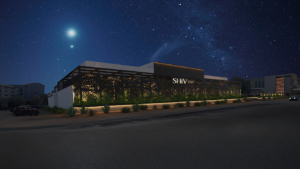If you’re in the market for a new roof or even a new home, you’ll want to know your roofing options. We’ve got you covered.
The following guide lists the most common roof types so you can make an informed decision about your next roof. We go into detail about the different roofing materials available to you and which housing situations they’re best suited for.
From this guide, you’ll learn the benefits, disadvantages, and general cost of your various roofing options. Then, you’ll be able to determine the best type of roofing for your needs.
Read this guide to learn all you need to know about common roof types.
Asphalt Shingles
The most common residential roof type you’ve seen is the asphalt shingle roof. These roofs are cheap enough for any budget and durable enough for most homes. And they’re light enough that they don’t require special reinforcement to hold them up.
Asphalt shingles aren’t affected much by heat or cold. But they are susceptible to damage from strong winds. And they should last around 50 years with almost no maintenance. Shingle roofing, especially asphalt shingles, are a great option for homeowners in the Atlanta area as this material is able to stand up to stormy weather and hot sun. Team Roofing can help you learn more about this durable and attractive option.
If you need an average roof for an average home on a modest budget, choose asphalt shingles.
Built-Up Roofing
BUR roofing is a flat roofing type similar to asphalt shingles. It’s basically like a single asphalt shingle as a sheet that covers the whole roof. Several layers of these sheets are applied on the roof, overlapping in one big pile.
The end result is an extremely durable roof that can even be used as an outdoor floor. It’s heavy, though, so it may require additional reinforcement.
Modified Bitumen Roofing
Modified bitumen roofing is essentially an upgrade to BUR. It’s layered like BUR, but made out of more durable materials, according to Lewis Roofing. Rather than tar and gravel, it’s made of tar-like bitumen and fiberglass or polyester fiber.
It may not seem like much of a difference. But modified bitumen roofing is lighter, more durable, and much easier to install than BUR.
Wood Shingles/Shakes
For the protection of shingles with a nicer, more natural look, many homeowners choose wood shingles. Shakes are similar, except they are cut manually instead of machine cut.
But as durable and aesthetically-pleasing as they are, they require a lot of maintenance. If you don’t take proper care of your wood roof, it’s susceptible to mold, rot, or other deterioration. They will also cost more upfront than asphalt shingles.
Clay/Concrete Tiles
Tile roofing is extremely durable, but also heavy. It costs a lot to install and requires more reinforcement than lighter roofs like asphalt.
But it will last you a very long time, over 50 years easily. Besides, most people choose tile roofing for its elegant, European look.
Slate Tiles
Slate roofing is even more long-lasting than clay or concrete tiles, or any other roof for that matter. A slate roof will most likely last 100 years or more.
It’s also the heaviest roof you can choose. In short, it’s expensive, almost invulnerable, and uniquely beautiful.
Metal Roofing
Metal roofing is another, heavy, durable, low-maintenance option. But it has a much broader price range than tile or slate roofing. Aluminum roofing, for example, is very inexpensive, and light, too.
It’s even strong enough to withstand natural disasters. However, it gets very loud when hit by rain or hail.
Remember This Guide to Common Roof Types
Now that you know the common roof types, what do you think about your options? Whichever type of roof you’re considering, remember this guide. Use this knowledge to choose the best type of roof for your situation.
If you want more helpful guides like this one, don’t click away. Check out our website for the best tips and guides on real estate, lifestyle, and more.




